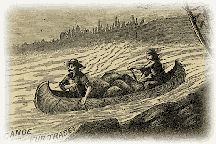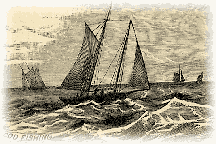Frequently Asked Questions:
What is an example event?
What is the purpose of the example list in the History Themes Project?
How should I use it?
Will each of these people and events be on the MEAP?
Is this list of historical examples comprehensive?
We don’t use textbooks, how will the list help us?
Is this all I have to teach this year?
What is the relationship between the theme and the example?
I teach early elementary students. How will this help me?

An example event is an event in history that is important. It is important because it meets criterion such as: transcends time and space, influenced subsequent events or affected large numbers of people. We know that by teaching an example event in depth we can increase students understanding of history, because this event is tied in importance to other events. These events will be the ones around which students will do projects, simulations, take field trips, or do independent study using the library and a variety of print and electronic sources. The example events are the ones that we expect students to remember.
Our textbooks, video series, primary source documents have long been the source of the story of history. We cannot ignore the story of the people, ideas, and events that complete it.
Knowing that each district chooses the books and materials they feel best suit the needs of their students, the purpose of the example events list in the History Themes Project is:
The material enclosed is to assist in planning units and lessons for United States history. Each school district should choose the books and materials they feel best suit the needs of their students. Every textbook approaches history from a slightly different perspective. As a teacher of history, how are you to know that you are teaching the same people and events that others are teaching? These example events form a basic from which the "story" of history will take shape. The accompanying themes provide the context of "big ideas" that students need to make sense of historical knowledge. back to top
The list of examples and themes should be used in conjunction with the Michigan Curriculum Framework Content Standards and Benchmarks for Social Studies. A major focus in grades 4, 5, 8 and 10 will be the history perspective. At the end of the school year students should be able to:
The people and events identified on the accompanying lists are the ones that the writers of the future MEAP questions will use. Remember, the MEAP asks students to apply information they know to information provided in the assessment to arrive at an answer. For example, you will not see questions that ask students to identify a person or a river. Many teachers have told us that the comfort level of their students is increased when the person quoted or the event in the prompt is also one students have studied. back to top

Absolutely not! This is a basic list. It is meant to "even the playing field" for all teachers and students. The events and people listed are the ones most often cited in text material and have met our criterion for an important person, idea, or event in history. It is rich enough for our item writers to develop good questions that test important themes and ideas, but basic enough to leave you instructional time for units that work well with your students and community. back to top
If you are not using a textbook for social studies this list may be used to select materials, themes, trade books and field trips for your class. If you cover all the events on the basic timeline and students have knowledge of the people by the end of the year, your students will be ready for the MEAP. back to top
No. You are also responsible for your portion of the geography, civics, economics, inquiry and public discourse and decision-making strands. Meet with the other teachers of social studies in your district to decide who, how, and when the benchmarks will be taught. The history perspective will be the major focus for integrating the other strands. back to top
An example from American History will help describe the relationship. Suggested examples associated with the theme conflict and cooperation are Causes of the American Revolution - Intolerable Acts, Competing Visions for the New Nation - Jefferson v Hamilton, and the World Role of a Young Nation - Monroe Doctrine. Each of these events is significant and covered in textbooks. But what exactly is it about these events that we want students to know? The theme gives us a focus for instruction and investigation by students. How did our cultures change in reaction to these events? back to top
How we spend our precious instructional time and what materials and resources we use with students are probably the most important instructional decisions that we make. Teaching is always about making choices. The History Themes Project will assist early elementary teachers with making choices that will be consistent with the content standards and that will provide a sound foundation for instruction in later elementary grades. back to top
Choosing read aloud books, projects, and materials that complement the themes and examples students will encounter in grades 4 and 5 will add depth to their understanding that is cumulative. The selections you make when building units on school, families, neighborhoods, and local communities, if aligned, will be the foundational support that will allow the teachers of your students in grade 4 and 5 to provide an even deeper understanding of historical events. It will provide a unity of instruction throughout elementary school that will be an important framework for your students’ success in acquiring an historical perspective. back to top
Click Here to Proceed to the Six Themes of History
| HOME | PURPOSE | FAQS | SIX THEMES OF HISTORY | EXAMPLE EVENTS | OVERVIEW CHART | IMPLEMENTATION TECHNIQUES | PDF |
with general questions,
for technical questions,
![]()